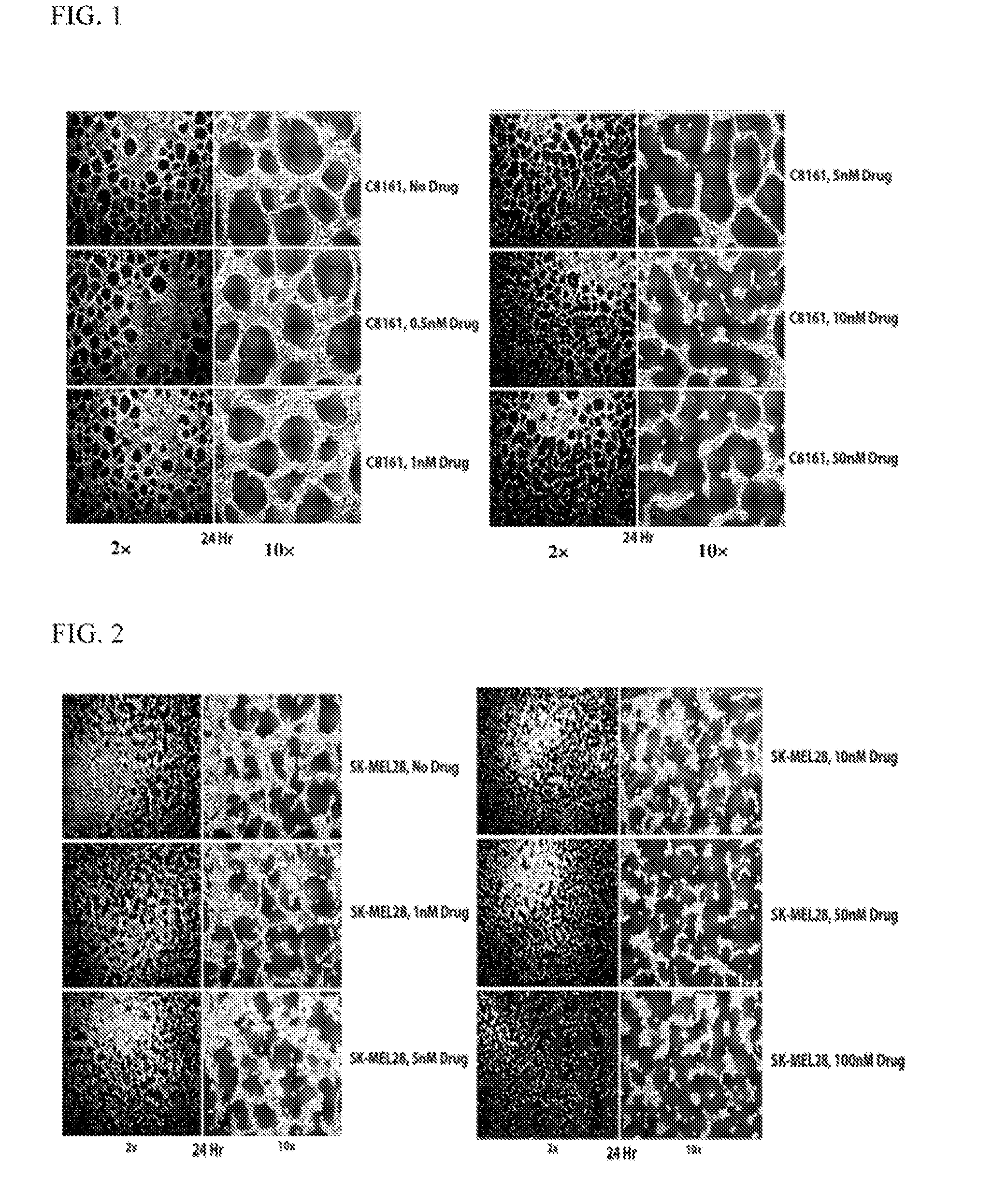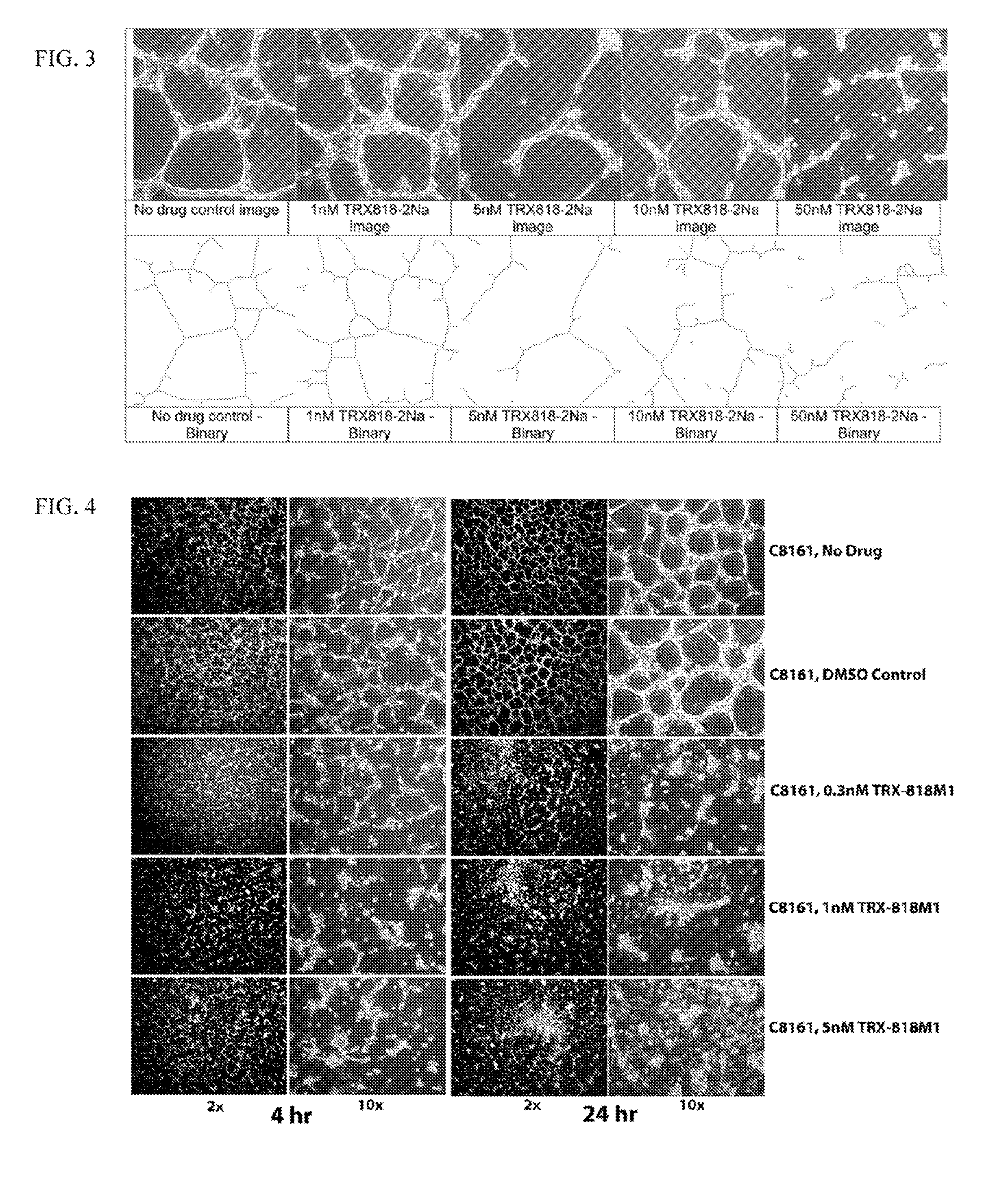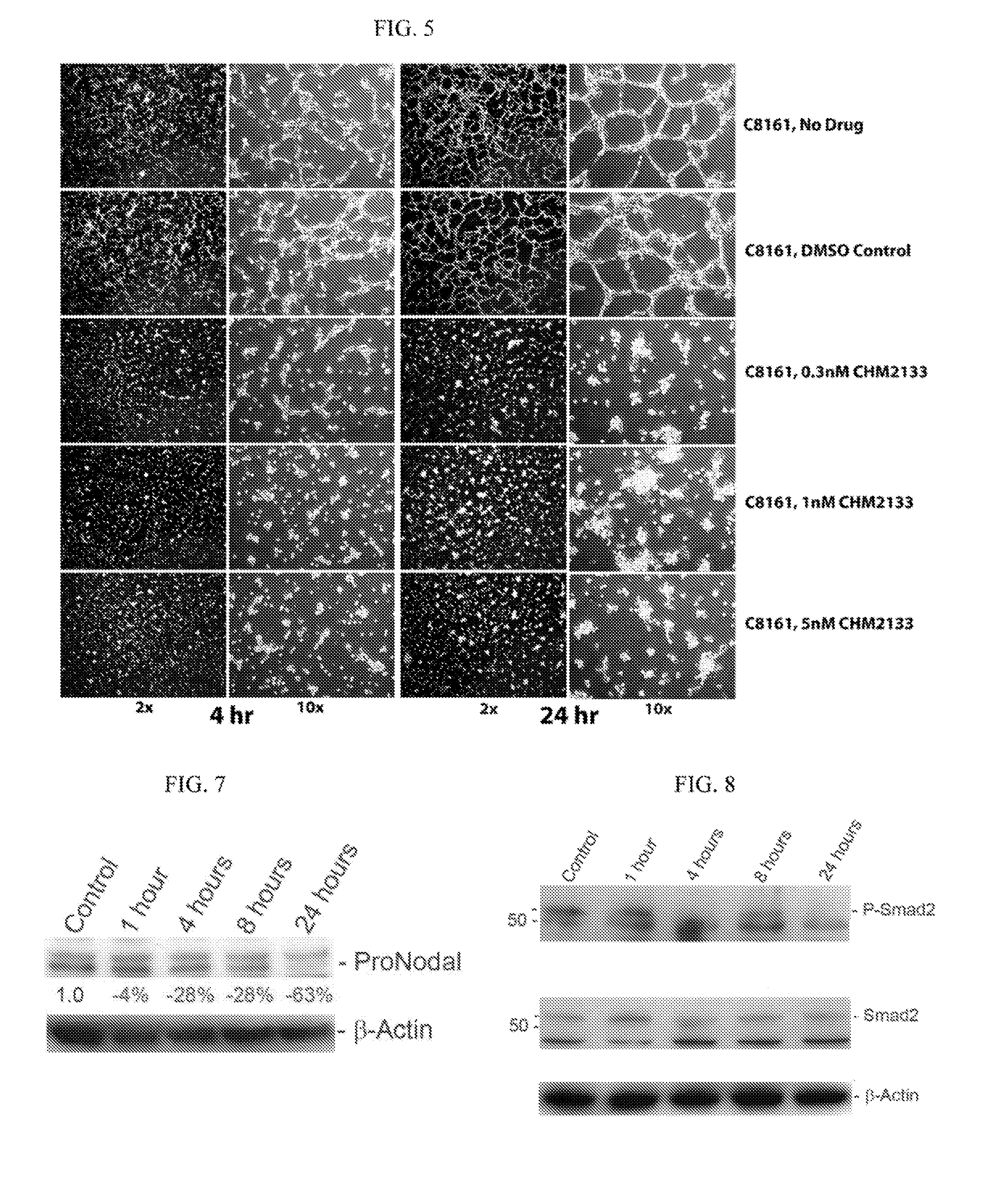Novel use of aryl-quinolin derivatives as inhibitors of vasculogenic mimicry
a technology of vasculogenic mimicry and derivatives, which is applied in the field of new arylquinolin derivatives, can solve the problems of higher risk of cancer recurrence, and poor prognosis of individuals with vm, so as to reduce the mrna level of cdh5 and reduce the formation of vm network. , the effect of reducing the mrna level o
- Summary
- Abstract
- Description
- Claims
- Application Information
AI Technical Summary
Benefits of technology
Problems solved by technology
Method used
Image
Examples
example 1
TRX-818 Inhibits Vasculogenic Mimicry Network, Formation in Aggressive Melanoma Cells
[0074]
[0075]Solutions of TRX-818 (2-(3-fluorophenyl)-6-methoxy-4-oxo-1,4-dihydroquinolin-5-yl phosphate) were prepared as follows. TRX-818 in sodium salt form was weighed, dissolved in sterile tissue culture water to prepare a 10 mM stock solution in advance. The stock solution was then aliquoted and stored frozen until use. A fresh aliquot of the stock solution was thawed, and diluted using a cell culture medium in series to prepare the final working solution on the day of assay.
[0076]Aggressive human melanoma (C8161 or SK-MEL28; 1×105) cells were seeded into a three-dimensional polymerized MATRIGEL™ (75 μl) for VM network analysis. C8161 or SK-MEL28 cells were treated for 24 h with 0.5, 1, 5, 10, 25 or 50 or 100 nM of TRX-818 at 5 or 24 h after cell attachment. Another set of melanoma cells were seeded onto a plastic dish and treated for the same amount of time before the cell viability of C8161 o...
example 2
Effect of TRX-818 on the mRNA Levels of VM Proteins
[0080]To determine whether TRX-818 reduced the VM network formation by altering the levels of the essential proteins for VM, its effect on Nodal, Notch4, VE-cadherin (CDHE5) or ephrin receptor A2 (Eph A2) expression was determined using qRT-PCR. 2×106 of aggressive human melanoma (C8161) cells were treated with 10 nM TRX-818 for 8, 24, 48, or 72 h. Sterile deionized water (tissue-culture grade) was used as vehicle.
[0081]The mRNA levels of Notch4 intracellular domain (Notch 4 ICD) and Nodal decreased by 75% and 80%, respectively, compared to the control group after 8 hours of treatment. The mRNA levels of Notch4 ICD and Nodal remained at 50% and 70% of the control cells, respectively, after 72 h treatment (FIGS. 6A-D). The mRNA levels of CDH5 decreased by 70% after 8 hours of treatment (10 nM) compared to the control group. The mRNA level of CDH5 remained at 50% of the control cells after 72 hours of continuous exposure to 10 nM TRX-...
example 3
Effect of TRX-818 on the Nodal and Smad Protein Levels
[0082]To further understand how TRX-818 alters the signaling pathways required for VM network formation, the protein levels of Pro-Nodal, Smad2, and phosphorylated Smad2 (P-Smad2) were determined using immunoblotting analysis. On the day of study, TRX-818 was prepared as described in Example 1, C8161 cells were untreated (control) or treated with 10 nM TRX-818 for 1, 4, 8, and 24 h. Protein expression of Nodal and total Smad2, and P-Smad2 was analyzed by immunoblotting analysis, 5×106 aggressive human melanoma (C8161) cells were seeded onto a plastic dish in the presence of 10 nM TRX-818, and total proteins were collected for analysis. To quantify the protein levels of Nodal and P-Smad2, 40 μg and 25 μg of total proteins were used for SDS-PAGE and immunoblotting, respectively. The protein level of β-actin was used for normalization to assure equal protein loading.
[0083]One hour treatment of C8161 cells with 10 nM TRX-818 resulted...
PUM
| Property | Measurement | Unit |
|---|---|---|
| vascular morphology | aaaaa | aaaaa |
| morphology | aaaaa | aaaaa |
| concentrations | aaaaa | aaaaa |
Abstract
Description
Claims
Application Information
 Login to View More
Login to View More - R&D
- Intellectual Property
- Life Sciences
- Materials
- Tech Scout
- Unparalleled Data Quality
- Higher Quality Content
- 60% Fewer Hallucinations
Browse by: Latest US Patents, China's latest patents, Technical Efficacy Thesaurus, Application Domain, Technology Topic, Popular Technical Reports.
© 2025 PatSnap. All rights reserved.Legal|Privacy policy|Modern Slavery Act Transparency Statement|Sitemap|About US| Contact US: help@patsnap.com



